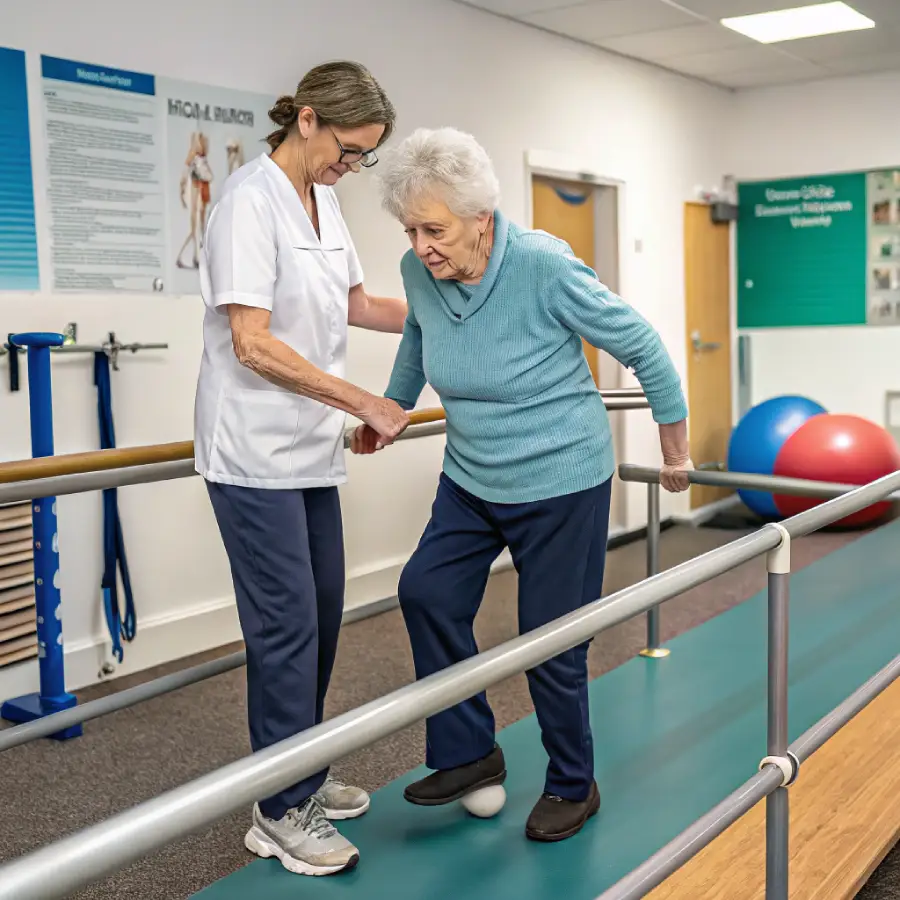Physiotherapy is often associated with treating musculoskeletal problems, but its benefits extend to helping with breathing issues as well. For individuals struggling with respiratory conditions, physiotherapy can significantly improve lung function, enhance breathing capacity, and alleviate discomfort associated with chronic respiratory diseases. In this article, we explore how physiotherapy can assist in managing breathing difficulties and improving overall quality of life.
What Are the Main Causes of Breathing Problems?
Breathing problems can stem from various underlying health conditions, each presenting unique challenges for the respiratory system. Here are some of the most common causes:
Chronic Respiratory Diseases: Conditions such as asthma, chronic obstructive pulmonary disease (COPD), bronchitis, and emphysema are major contributors to breathing difficulties. These conditions often lead to reduced lung function, frequent shortness of breath, and challenges in maintaining proper airflow.
Post-Surgical Complications: After surgeries, particularly those involving the chest or upper abdomen, patients may experience restricted lung expansion due to pain or discomfort. This can hinder their ability to take deep breaths and may lead to temporary breathing issues as they recover.
Neurological Disorders: Diseases like multiple sclerosis, Parkinson’s disease, or spinal cord injuries can impair the muscles that control breathing. As a result, these conditions can cause weakened or uncoordinated breathing patterns, leading to respiratory difficulties.
✔️ Read related article: How Often Should You See a Physiotherapist?
How Physiotherapy Helps with Breathing?
Physiotherapy uses a combination of exercises, manual techniques, and education to help patients regain control of their breathing, strengthen respiratory muscles, and clear their airways. Here are some of the common physiotherapy techniques used to address breathing issues:
- Breathing Exercises
Breathing exercises are one of the most effective ways to manage breathing problems. These exercises help improve lung capacity, strengthen the diaphragm, and promote efficient breathing patterns. Some commonly used breathing exercises include:
- Diaphragmatic Breathing (Belly Breathing): This technique encourages the use of the diaphragm to take deeper breaths, improving oxygen exchange and reducing the effort required to breathe. It helps the patient relax and breathe more efficiently.
- Pursed-Lip Breathing: This exercise helps slow the breathing rate, keeps airways open for longer, and eases the work of breathing, particularly for people with chronic conditions like COPD.
- Segmental Breathing: This involves focusing on different parts of the lungs to promote better lung expansion. It is often used to help patients recover after surgery or those with limited lung function.
These exercises are simple yet powerful in helping individuals manage their breathing more effectively, reducing shortness of breath, and increasing comfort.
- Chest Physiotherapy
Chest physiotherapy involves a range of techniques designed to help clear mucus from the lungs, improve airflow, and enhance breathing efficiency. This is especially beneficial for patients dealing with excess mucus buildup, which can occur with conditions like bronchitis or cystic fibrosis. Some techniques include:
- Percussion and Vibration: The physiotherapist uses manual techniques to tap or vibrate the chest, helping to loosen mucus in the lungs so it can be expelled more easily.
- Postural Drainage: This technique involves positioning the body in ways that allow gravity to assist in draining mucus from specific areas of the lungs.
- Exercise Therapy
Exercise plays a crucial role in improving respiratory health. Physiotherapists design exercise programs tailored to the patient’s condition and fitness level. Exercise therapy focuses on:
- Aerobic Exercises: These exercises, such as walking, cycling, or swimming, improve cardiovascular health and increase lung capacity. Over time, they help reduce breathlessness and improve endurance.
- Strengthening Exercises: Strengthening the muscles involved in breathing, such as the diaphragm and intercostal muscles, helps improve the efficiency of breathing.
- Endurance Training: Gradually increasing the intensity and duration of exercise helps patients build stamina, making daily activities easier and reducing the sensation of breathlessness.
- Education and Breathing Techniques
Educating patients on how to manage their breathing is an important aspect of physiotherapy. Physiotherapists teach various techniques to help patients control their breathing, particularly during physical activity or periods of stress. Some common strategies include:
- Energy Conservation Techniques: Patients learn how to pace themselves during activities, allowing them to perform daily tasks without becoming too breathless.
- Controlled Breathing: This technique helps patients regulate their breathing while performing tasks that typically cause shortness of breath, such as climbing stairs.
- Pulmonary Rehabilitation
Pulmonary rehabilitation is a comprehensive program designed for individuals with chronic lung diseases. It combines exercise, education, and support to improve lung function and manage symptoms. Physiotherapists play a critical role in these programs, guiding patients through exercises and breathing techniques that help them regain control over their breathing and become more active.
- Postural Adjustments
Proper posture is essential for optimal lung expansion and breathing. Physiotherapists work with patients to improve their posture, particularly if poor posture is contributing to their breathing difficulties. Simple adjustments, such as sitting up straighter or changing sleeping positions, can make a significant difference in how easily a person breathes.
✔️ Read related article: What Are the Signs That You Need to See a Physiotherapist?
The Benefits of Physiotherapy for Breathing Issues
Physiotherapy offers several benefits for individuals with breathing difficulties, including:
- Reduced Shortness of Breath: By practicing breathing exercises and techniques, patients learn to manage and reduce their shortness of breath during daily activities.
- Improved Lung Function: Targeted exercises and therapy help improve lung efficiency, increasing oxygen intake and overall lung capacity.
- Enhanced Physical Endurance: Regular exercise therapy helps build stamina, allowing patients to be more active with less fatigue.
- Better Management of Chronic Conditions: Through education, exercise, and support, patients with chronic respiratory conditions can better manage their symptoms and reduce hospital visits.
Sum Up
Physiotherapy is an effective approach for managing breathing issues, providing targeted treatments that help improve lung function, reduce symptoms, and enhance the overall quality of life. Whether dealing with chronic respiratory conditions, recovering from surgery, or addressing other breathing-related issues, physiotherapy can offer the support and tools needed to breathe easier and live more comfortably. If you’re experiencing breathing difficulties contact our physiotherapy clinic in Scarborough, consult with our physiotherapist to explore how these techniques can benefit your health.










